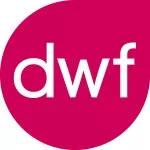Are your medical records in safe hands? Theft of paperwork and storage devices in the Health sector is on the rise.
The Notifiable Data Breaches Scheme (the Scheme), requires Australian Government agencies and various organisations to provide notification of certain data breaches to the Australian Information Commissioner. In April 2018 we reported on the first Notifiable Data Breaches Quarterly report. On 31 July 2018, the Office of the Australian Information Commissioner (OAIC) issued its Quarterly Report for the period 1 April to 30 June 2018 (the June Quarter). This paper highlights key statistics of the most recent report with a particular focus on the health sector.
In its most recent report, the OAIC confirmed that the June Quarter involved 242 reported data beaches. At first glance, this appears to be a significant increase from the 63 breaches for the period January to 20 March 2018 (the Previous Quarter), however the Previous Quarter was not a full one, as the Scheme did not commence until 22 February 2018.
Of the 242 breaches notified in the June Quarter, 36% were attributable to human error, 59% were the result of malicious or criminal attacks and 5% were a result of system faults. The cause of the human errors were as follows:
- 22 notifications - involved emails containing personal information was inadvertently sent to the wrong recipient;
- 12 notifications - involved an unintended release and/or publication of personal information
- 10 notifications - personal information sent by post to the wrong mail recipient.
In the June Quarter, ONE human error involving the loss of a storage device had an impact on 1199 individuals who were affected by the breach.
Malicious or criminal attacks
The majority of the breaches in the June Quarter were attributable to malicious or criminal attacks - deliberate acts to obtain information for financial or other gain. The attacks included cyber incidents such as phishing, malware, ransomware, brute-force attacks, compromised or stolen credentials by other means, as well as social engineering or impersonation, and actions of rouge employees or insider threats.
The Health sector
For the June Quarter, 49 of the 242 (20%) of the breaches
involved the health sector, an increase from the 15 (24%) reported
breaches in the Previous Quarter. As per the Previous Quarter, the
June Quarter also saw the health sector involved in the greatest
proportion of reported breaches. This was followed closely with 36
notifications by the finance sector.
Relevantly, these statistics do not include notifications under the
My Health Records Act 2012, which are subjected to different
notification requirements. Nor do the statistics include breaches
of State or Territory public hospitals or health services, as a
health service provider for the purpose of the Scheme, generally
includes any private sector entity that provides health services
within the meaning of s 6FB of the Privacy Act.
Health information continues to be a lucrative target for hackers with weaponized ransomware, misconfigured cloud storage buckets and phishing emails dominating the health attacks. These threats are likely to continue and cybercriminals are likely get more creative. Whilst data breach notification requirements appear to be a positive step for identifying data insecurity, further reform, investment and insurance is necessary to ensure stronger cybersecurity.
Evidently, much more also needs to be done to minimise human errors.
The content of this article is intended to provide a general guide to the subject matter. Specialist advice should be sought about your specific circumstances.



